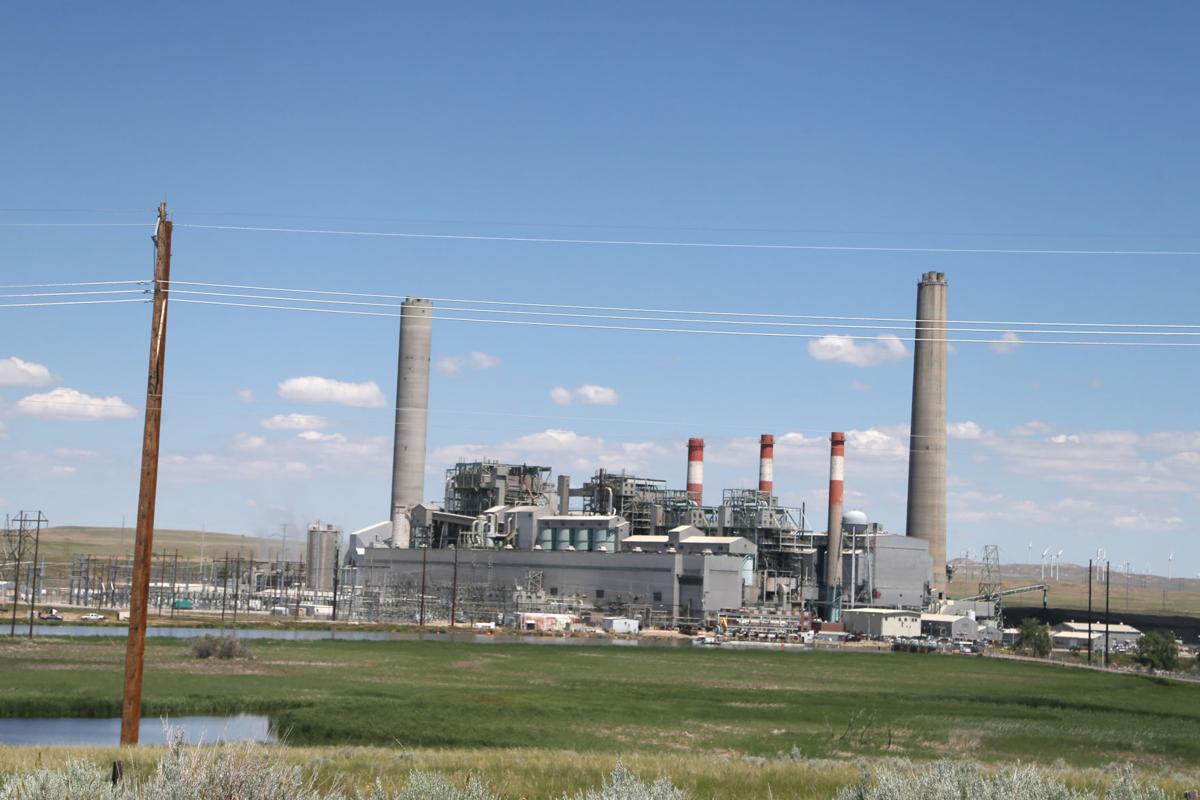Amid Soaring Natural Gas Prices, a Boost for Coal

By Nicole Pollach
September 18, 2021 - Electric utilities are required by law to provide power as cheaply as possible.
Over the last decade, market forces and climate policies have propelled utilities away from coal. But high natural gas prices are nudging more coal into the electricity mix.
Utilities’ fuel choices are driven primarily by the price of natural gas, said Tyler Hodge, a senior economist in the Energy Information Administration’s Office of Energy Analysis.

Power lines surround the coal-fired Dave Johnston Power Plant on June 30 in Glenrock. Higher natural gas prices have made coal a more competitive commodity in the short-term.
Photo: Cayla Nimmo, Star-Tribune
“In the short run, that can have an effect in terms of what specific power plants dispatch to meet electricity demand,” Hodge said. “But over the long run, that natural gas price can also affect the investment decisions about what new types of power plants to build, and conversely, what types of power plants — i.e., generally coal — should be retired.”
Until the mid-2010s, coal was the dominant source of U.S. electricity generation. But as concern mounted about the climate impacts of coal, a string of breakthroughs in drilling technology, including the fracking boom, turned natural gas from an auxiliary fuel source into coal’s biggest competitor.
Natural gas prices tumbled slowly downward for the rest of the decade. By January 2020, the market was saturated. Gas prices were so low that drilling in Wyoming had all but ceased.
“That very legislative session, we were talking about trying to figure out ways to trigger a little bit of a tax incentive to help spur natural gas production,” said Pete Obermueller, president of the Petroleum Association of Wyoming.
When the pandemic hit months later, roads and offices sat empty, and oil and gas demand crumpled. Then, almost as abruptly, the arrival of vaccines brought the economy roaring back. But producers were unequipped to meet that sudden demand.
“Companies can’t just flip a switch and start producing again,” Obermueller said.
At the moment, operators aren’t in any hurry to catch up. After a volatile year and a half, they’re waiting to see how prices stabilize — especially as renewables squeeze both coal and gas into a shrinking share of the electricity market.
The measured recovery of natural gas means prices are expected to settle as supply increases, but remain relatively high through at least 2022, according to the Energy Information Administration. Natural gas is expected to average $3.63 per million British thermal units in 2021 and $3.47 in 2022.
In the meantime, the agency projects that utilities will turn to coal to meet some electricity demand.
Power plants that burned Appalachian coal made up 68% of the coal capacity retired across the U.S. since 2011, partly because of increased competition from natural gas and renewables, the Energy Information Administration reported last month.
Cheaper Western coal, which is mined mostly in Wyoming, remains more economical than its Appalachian counterpart. Plants reliant on Western coal have faced less regional competition and have retired at a slower rate, the agency said.
Coal from the Powder River Basin generally becomes cost-competitive when natural gas prices exceed between $2.50 and $3.00, said Travis Deti, executive director of the Wyoming Mining Association. And a recent uptick in Western coal production, but not Appalachian coal production, indicates that utilities are turning to Wyoming coal to keep costs down.
Hodge cautioned that the shift back to coal is only temporary — and that even as utilities’ coal capacity diminishes, rate regulations will insulate consumers from future natural gas price swings. “You really need to see sustained higher prices in order for those higher fuel costs to be passed to the retail rate,” he said.
If natural gas prices fall at the anticipated pace, Hodge said, the current price hike is unlikely to impact utilities’ coal retirement plans.

